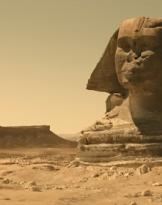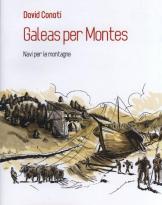Antonella Orefice
Ed. Salerno, Rome 2022
Pages 206
“Two cities, Naples and Paris, and two queens, Carolina and Antoinette, whose opposite destinies intertwine in revolutionary Europe, are at the center of this tale in two voices”. One married Ferdinand IV of Bourbon, becoming queen of Naples, the other Louis XVI, becoming queen of France.
Belonging to the Habsburg-Lorraine, the two sisters "they were never loved by their subjects, nor did they try too hard to be accepted, earning themselves the epithet of Austrians", to indicate “the inability to be welcomed into a foreign country”. It was their mother, Maria Teresa, empress of the Holy Roman Empire, who organized their lives, and above all their marriages, sacrificing them to reasons of state. “She was the only deus ex machina who predicted and piloted every breath of her children, from marital relations to political interference.”
The House of Habsburg–Lorraine began on February 12, 1736, when Maria Theresa, a Habsburg, married the son of Louis XV of France, Francis Stephen of Lorraine. A marriage from which sixteen children were born.
In 1765, after the loss of her husband, “one of Maria Teresa's greatest concerns [...] was the marital union of her children. […] Sealing alliances through marriages meant acquiring power.” And so, when Giuseppa, the betrothed of Ferdinand IV, died prematurely, “Charlotte was used as a replacement pawn” and while “Marie Carolina was about to become Queen of Naples, the announcement of the promise of marriage between Antoine and the Dauphin of France was published. It was the definitive separation of the two sisters, the painful farewell at that fateful point beyond which fate led them along dramatically opposite paths."
The marriage between Charlotte and Ferdinand IV of Bourbon was celebrated, by proxy, on 7 April 1768 and, “In the same day […], the young Archduchess undertook her long journey towards the Bourbon capital. […] Maria Teresa accompanied the bride to the royal carriage with her heart in pain, because she was aware of Ferdinand's limitations and of the difficulties that Charlotte would encounter for the rest of her life. […] But reason of state did not contemplate pity. […] And so it was that at sixteen Charlotte gave way to Maria Carolina.” After more than a month of travel, the spouses met in Portella, near Terracina. “Ferdinand had already appeared ugly to her in portraits, but up close it was a cold shower, and then those irreverent and coarse ways certainly did not honor the expectations of a queen”. In fact, Ferdinand, “having not been immediately designated as successor to the throne, he had not received cultural tools adequate for his future role”.
Maria Carolina, once settled in Naples, “having overcome the first unfortunate impact and evaluating the evident deficiencies of her husband to her advantage, she concentrated on acquiring power in state affairs”, therefore she was not willing to tolerate the presence of Tanucci, a trusted man of the Bourbons, much more “who daily reported to Charles III, Ferdinand's father, even the breaths of the Kingdom”.
Two years after Charlotte's wedding, it was Antoine who got married, in Versailles, on 16 May 1770, after having left Vienna definitively, at just fifteen, on 21 April. “The most frustrating condition of her debut at Versailles was the blanket of ice between her and the Dauphin Louis Augustus, who had been raised in hatred towards Austria”.
Maria Teresa, meanwhile, “to exercise perfect control over the progress of diplomatic marriages, she had entrusted herself to a series of very scrupulous ambassadors, instructing them to bring her detailed information, advise and monitor the lives of young couples”.
The death of Louis XV in 1774 brought the Dauphin, in his early twenties, to the throne of France. “Young and unprepared Louis and Marie Antoinette found themselves with a heavy crown on their heads and the dark shadow of social discontent that was beginning to threaten.” And while the impotence of Louis XVI was not allowing the crown of France to have an heir, in Naples, after 4 years of marriage, Maria Carolina gave birth to her first daughter. The subsequent birth of her first son allowed her to become part of the Council of State and to overthrow Tanucci. Finally, Marie Antoinette also gave birth to her first daughter in 1778.
Two years later, on 29 November 1780, Empress Maria Theresa, a point of reference for her children, passed away.
In 1781, Louis Joseph was born, the long-awaited heir to the French throne. Marie Antoinette, however, regardless of the country's serious deficit, continued to spend and waste, fueling the people's aversion towards her, until the day of her end, preceded by that of her husband, sentenced to death on 20 January 1973. , sentence carried out the following day, in a crowded square, Revolution Square, where he was beheaded. On October 16th it was her turn. The revolutionary tribunal found her “guilty of all the evils that had afflicted the country since the day of his arrival, leech of the state coffers, conspirator and enemy of the republic, and above all Austrian”. She too was transported, amidst the deafening cries of the people, on a dirty manure cart, to Revolution Square, “everything was resolved in an instant with dignity and composure. The Ancien regime ended and the merciless blade of the guillotine delivered Austria to the tribunal of History".
Maria Carolina, who never got over the pain of losing her dear sister, “he did not give himself peace, he swore revenge and cursed the Jacobins and their supporters. Terrified by the looming threat of an invasion, she constantly followed the developments of the war efforts on the French front, " transforming herself into a feared Austrian, despotic and reactionary. But the victories of the Napoleonic army and the news of the imminent arrival of the French pushed the court, on 21 December 1798, to flee by ship to Palermo. And so, on 24 January 1799, with the arrival of the French in Naples, the Neapolitan Republic was proclaimed. “The best minds of the Neapolitan bourgeoisie and nobility were called to collaborate”.
The republic, however, was short-lived and, with the restoration of the monarchy, Maria Carolina took her revenge with the death sentence of all those who had taken part in it. The Neapolitan people did not forget that "she and her husband had been sheltered in Palermo, between parties and balls, [...] and had returned to Naples only to enjoy the gallows and take revenge on the criminals, but for those who had fought against the French, sacrificing lives and having lost everything, nothing had returned, except the bitterness of a fratricidal war”.
After Ferdinand's abdication in 1813, which deprived her of any political influence on the fate of the kingdom, from Hötzendorf castle in Vienna, where she was staying, she tried to start negotiations to put Ferdinand back on the throne, but by now “no one was more willing to support her diplomatic maneuvers and still give her the possibility of existing and commanding”. In that castle he died, in total solitude, on 8 September 1814. What Antonella Orefice, historian and writer, as well as director of the "Nuovo Monitore Napoletano", describes in this essay, are the vicissitudes of two sisters who, just teenagers, found themselves, at their mother's behest, facing court life alongside men that Maria Teresa had chosen for them.
Marie Antoinette and Maria Carolina “they were opposite sides of the same coin, one victim, the other executioner, inextricably united, but opposed in destiny and historical judgement, a two-faced Janus with Marie Antoinette crystallized in the death of the Ancient Regime and Maria Carolina on the threshold of a 'new era destined to upset the political balance of Europe and the world'.
Gianlorenzo Capano












